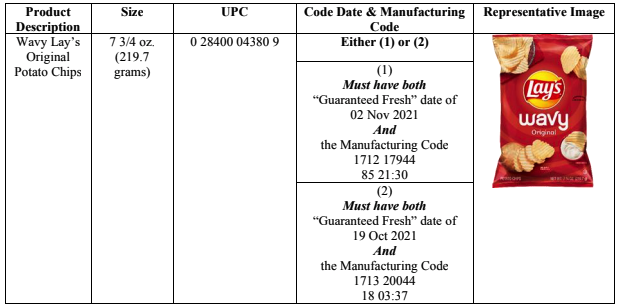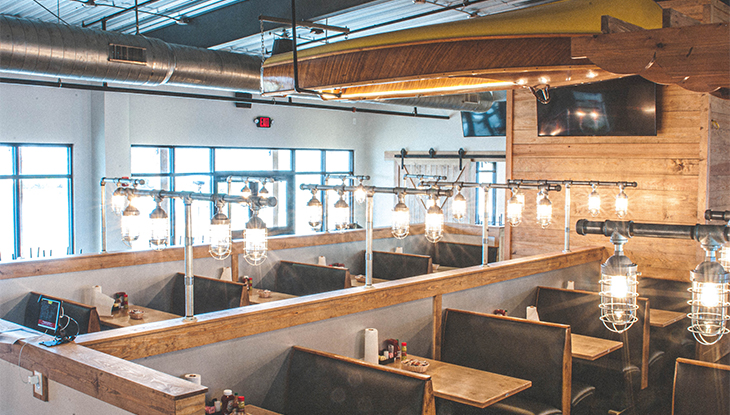Table Of Content

By the mid-1990s, as the snack food sector entered a slower growth period marked by heavy price competition, it became increasingly clear that Frito-Lay would remain the industry front-runner by a wide margin. The company increased its share of the salty snack market in the United States from 38 percent in the late 1980s to 55 percent by 1996. Competitive pressure from Frito-Lay led two of its fiercest rivals to wave the white flag. Borden sold most of its snack businesses in the mid-1990s as part of a massive restructuring.
Advertising
Covering Venezuela, Chile, Colombia, Ecuador, Guatemala, Honduras, Panama, Peru, and El Salvador, the joint venture was designed to enable Frito-Lay to better penetrate the $3 billion salty snack sector in Latin America. Made with a fake fat called olestra developed by Procter & Gamble (ironically the maker of rival chip Pringles), the Wow! Products were controversial because of reports and studies that indicated that the chips could cause gastric distress.
Division of PepsiCo, Inc.
The 1960s was an era of consolidation, with a number of food and beverage firms being gobbled up by larger entities. Pepsi-Cola was considered a takeover target not only because it ran a distant second in the soft drink sector to industry giant Coca-Cola Company, but also because little of the company's stock was in the hands of management. Following the creation of PepsiCo, however, the new company's directors held a much larger proportion of shares, with Lay holding a 2.5 percent stake himself. A second force behind the merger was Frito-Lay's desire to more aggressively pursue overseas markets. The company's sales had largely been restricted to the United States and Canada, but it could now take advantage of Pepsi's strong international operations, through which Pepsi products were sold in 108 countries. Later that year, Lay borrowed $100 to take over Barrett's small warehouse in Nashville on a distributorship basis.
Frito-Lay Company
Frito-Lay thus created the thinner, crispier Tostitos, which could be eaten alone, made into nachos, or dipped into increasingly popular salsas. By 1985 Tostitos was Frito-Lay's number five brand, with sales of about $200 million, trailing only Doritos ($500 million), Lay's ($400 million), Fritos ($325 million), and Ruffles ($250 million). Also in 1985 Frito-Lay expanded its tortilla chip line with the introduction of Santitas white and yellow corn round chips. By 1954 the Frito Company business included 11 plants and 12 franchise operations.
Send us Patriots: Ukraine’s battered energy plants …
Frito-Lay says it plans to deploy 700 electric vehicles by the end of the year. The company is also partnering with an EV charging company, based in Huntersville, that designs and builds the infrastructure. There are 28 trucks, traveling around 800 miles, that depart from the Nevada Blvd. location daily. Allen says electrifying the fleet will eliminate 260 metric tons of greenhouse gas emission each year. A growing juice bar company, The Gem, needed a second location in the Dallas are...
Frito-Lay, the $12 billion convenient foods manufacturer, hired C1S to design th... PepsiCo is dedicated to producing the highest quality, greatest tasting food and beverage products in every part of the world. For this reason, PepsiCo adheres to all relevant regulatory requirements regarding the use of genetically-modified food crops and food ingredients within the countries it operates. In order to go fully electric on the vehicle front, the snack company partnered with Duke Energy, which provides the transformer for power. Tuesday, Frito-Lay announced its southwest Charlotte Product Exchange Center is the company’s first 100 percent electric-vehicle site. In June 1965 Frito-Lay merged with Pepsi-Cola Company to form PepsiCo, Inc., with Frito-Lay becoming an independently operated division of the new company.
Andrews, Kendall “Ken” DeVaughn - The Chattanoogan
Andrews, Kendall “Ken” DeVaughn.
Posted: Thu, 17 Dec 2020 08:00:00 GMT [source]
In 1946 another franchise was launched in Bethesda, Maryland, followed by a Hawaii-based franchise in 1947. The following year, Frito introduced Chee-tos brand Cheese Flavored Snacks, which gained immediate popularity. Meantime, the Fritos brand went national in 1949 when Doolin purchased color advertisements in several magazines, including Ladies' Home Journal, Better Homes and Gardens, and Life. Impressed with his five-cent snack, Doolin discovered that the manufacturer wished to return to Mexico and would sell his business for $100. Doolin borrowed the money from his mother, purchasing the recipe, 19 retail accounts, and production equipment consisting of an old, handheld potato ricer.
In 1963 Frito-Lay began using the slogan "Betcha Can't Eat Just One" in its advertising for Lay's potato chips. Two years later comedian Bert Lahr began appearing in ads in which he attempted--always unsuccessfully--to eat just one Lay's chip. Annual revenues for Frito-Lay exceeded $180 million by 1965, when the company had more than 8,000 employees and 46 manufacturing plants. Lay and the Frito Company merged to form Frito-Lay, Inc., a snack food giant headquartered in Dallas with revenues exceeding $127 million. The new company began with four main brands--Fritos, Lay's, Ruffles, and Chee-tos--and a national distribution system.
Frito-Lay Announces First 100% All-Electric Vehicle Site
In 1953 the Frito Kid made his debut as a company spokesman; the character continued to be used in Fritos advertising until 1967. In 1956 the Frito Kid made an appearance on the "Today" show with host Dave Garroway, marking the Frito Company's first use of television advertising. Fritos gained a new advertising theme in 1958 with the debut of "Munch a Bunch of Fritos." That year, the Frito Company acquired the rights to Ruffles brand potato chips. The following year, Doolin died, having led his company to its status as a major snack food maker, with revenues exceeding $51 million.
As Kendall succinctly related to Forbes in 1968, "Potato chips make you thirsty; Pepsi satisfies thirst." The plan was to jointly market PepsiCo's snacks and soft drinks, thereby giving Pepsi a potential advantage in its ongoing battle with Coke. Unfortunately, these plans were eventually scuttled by the resolution of a Federal Trade Commission antitrust suit brought against Frito-Lay in 1963. The FTC ruled in late 1968 that PepsiCo could not create tie-ins between Frito-Lay and Pepsi-Cola products in most of its advertising. PepsiCo was also barred from acquiring any snack or soft drink maker for a period of ten years.

Williamson served as the first chairman and CEO of Frito-Lay, with Lay taking the position of president. In 1962 Lay took over as CEO, with Fladger F. Tannery becoming president; two years later, Lay added the chairmanship to his duties. In the midst of the Great Depression, the lack of job prospects spurred a number of young people to turn to entrepreneurship in order to get ahead. Among these were the founders of the two companies that would merge in 1961 to form Frito-Lay.
Industrial Distribution Co. hired C1S for design-build of an existing 103,000-sq... Provided comprehensive design assistance for Phase 1 of a semiconductor facility in North Texas spanning 1,500,000 million square feet. The mail order pharmacy company, ExactCare, hired C1S for a finish out of their ... Ethicon, the medical device company within Johnson & Johnson, hired C1S to rewor... C1S completed the design and construction of the new Deep Ellum restaurant Ebb &...
With the domestic market so firmly in its control, Frito-Lay was sure to look increasingly overseas for growth opportunities, particularly because there was no other global competitor in the industry. In the early 21st century, the company was likely to continue its expansion of its main brands--especially Lay's, Ruffles, Chee-tos, and Doritos--into new markets and to seek additional acquisitions and joint ventures in order to add more brands to its non-U.S. Portfolio, which featured Walker's in the United Kingdom and Sabritas in Mexico. Entering the 1990s, Frito-Lay faced continuing challenges from both regional and national players, including the upstart Eagle Snacks brand, owned by beer powerhouse Anheuser-Busch Cos. Eagle Snacks gained market share in the 1980s with premium products that sold for low prices, some of which were 20 percent lower than those of Frito-Lay. In addition to the increased competition, Frito-Lay also suffered in the late 1980s through 1990 from self-inflicted wounds, such as increasing prices faster than inflation, letting the corporate payroll become bloated, and allowing product quality to decline.
One of the leading PET recycling companies in the U.S., CarbonLITE hired C1S to design and build out an empty 202,500-square-foot building into a state-of-the-a... The C1S team provides industry-leading design-build expertise allowing us to overlap the design and construction phases of our projects. This reduces the project timeline and brings organization to complex and fast-track projects.
In 1932 the Texas native was running an ice cream business which was struggling because of a price war. Doolin began seeking a new venture and happened to buy a five-cent, plain package of corn chips while eating at a San Antonio café. At the time, corn chips or "fritos" (the word frito means fried in Spanish) were a common fried corn meal snack in the Southwest. Typically, cooks would cut flattened corn dough into ribbons, then season and fry them.
Lay gained from the Frito Company an exclusive franchise to manufacture and distribute Fritos corn chips in the Southeast. In 1983 Calloway shifted to the PepsiCo headquarters in Purchase, New York, to become the parent company's CFO (and eventually its chairman and CEO). Taking over as president of Frito-Lay was Michael Jordan, who held the position for two years before also heading to Purchase and eventually becoming PepsiCo president.



No comments:
Post a Comment